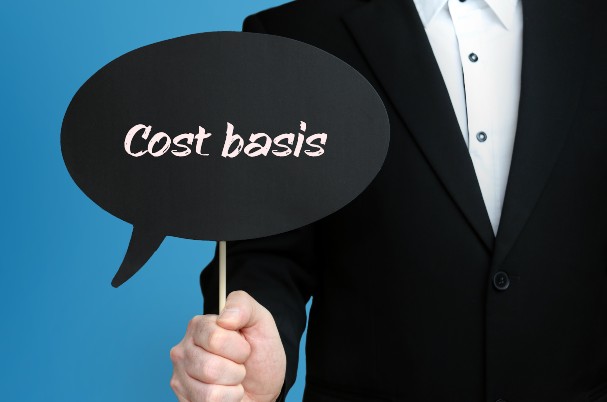Cost Basis Gain or Loss and Performance
When reviewing investment performance, there’s a common misconception that unrealized and realized capital gain or loss is a measurement of performance. We take a look at how cost basis gain or loss may not be the best indicator.
It’s important to understand that unrealized capital gain or loss merely shows what must be reported to the IRS if the investment was sold, which is different from the gain or loss that resulted from the change in value (market appreciation or depreciation plus income) since the time of purchase. For this reason, cost basis should be used to calculate capital gains or losses for tax filing purposes only—not to measure investment performance.
Hypothetical Example
An identical $10,000 investment is made in two mutual funds (Mutual Fund A and Mutual Fund B) on the same day. The $10,000 investment is the original cost basis for each fund.
Original Cost Basis
| Mutual Fund A | Mutual Fund B | |
| Initial investment | $10,000 | $10,000 |
| Price paid per share | $10 | $10 |
| Shares | 1,000 | 1,000 |
| Original cost basis | $10,000 | $10,000 |
During the year, the value of Mutual Fund A increases $1,000 because of market appreciation, but the fund pays no dividends. Mutual Fund A ends the year with a market value of $11,000.
Mutual Fund B experiences no market gains but earns $1,000 in dividends, which are reinvested at a net asset value of $10. The total year-end market value, however, is $11,000, the same as Mutual Fund A.
Account Activity
| Mutual Fund A | Mutual Fund B | |
| Initial investment | $10,000 | $10,000 |
| Increase from market appreciation | $1,000 | $0 |
| Dividends paid and reinvested | $0 | $1,000 |
| Price per share for reinvested dividends | N/A | $10 |
| Shares purchased with reinvested dividends | N/A | 100 |
| Year-end account value | $11,000 | $11,000 |
Here’s where cost basis and investment performance start to differ.
When the price of Mutual Fund A went up, the value of the account increased to $11,000—but the cost basis remained steady at $10,000. The additional $1,000 is considered unrealized capital gain, which is commonly misinterpreted as investment performance.
When the dividends for Mutual Fund B were reinvested, the cost basis increased to $11,000 because the dividends were used to buy more shares and treated like any other investment in the fund.
Year-End Cost Basis
| Mutual Fund A | Mutual Fund B | |
| Year-end account value | $11,000 | $11,000 |
| Shares | 1,000 | 1,100 |
| Price per share | $11 | $10 |
| Year-end cost basis | $10,000 | $11,000 |
| Unrealized capital gain/loss | $1,000 | $0 |
| Starting Value | Ending Value | Investment Performance Return | Unrealized Capital Gain/Loss |
|
| Mutual Fund A | $10,000 | $11,000 | 10% | 10% |
| Mutual Fund B | $10,000 | $11,000 | 10% | 0% |
In this scenario, both investments reflect the same year-end account value and investment performance return but have an unequal unrealized capital gain. This is because the dividend was used to buy more shares, which increased the cost basis of the Mutual Fund B investment. The unrealized capital gain or loss considers only the difference between the market value of the investment and the associated cost basis. It does not capture the dividends, interest, or capital gains the fund distributes to the investor. Whether you reinvest distributions or take them in cash, they should be considered part of your return. When a stock pays a dividend or a bond generates interest, it represents earned money you didn’t have before.
Using the Right Metrics
Use performance metrics when assessing investment holdings such as the time-weighted return and internal rate of return—rather than unrealized capital gain or loss—to accurately measure investment performance. Cost basis won’t tell you how much money you have made, but it will give you the information you need to file your taxes. If you’d like to learn more about these concepts and metrics, I’d be happy to discuss them with you.
© 2025 Commonwealth Financial Network®
Latest News
How much does college really cost?
April 2, 2025
How Much Does Your Bracket Pick Really Cost? We hope you're just as excited as we were for this year’s March Madness Tournament and finally getting down to F...
READ MORE...Big News for Retirees: Social Security Fairness Act Repeals WEP and GPO
March 27, 2025
If you or your spouse have worked in both the public and private sectors—or if you’re currently drawing a government pension—there’s important news that...
READ MORE...Managing Taxes on Your Investments
February 19, 2025
Presented by Scott Portlock CFP®, CLU® When it comes to your money, it’s not what you earn, it’s what you keep. Here are some ideas that may help le...
READ MORE...Loading...






